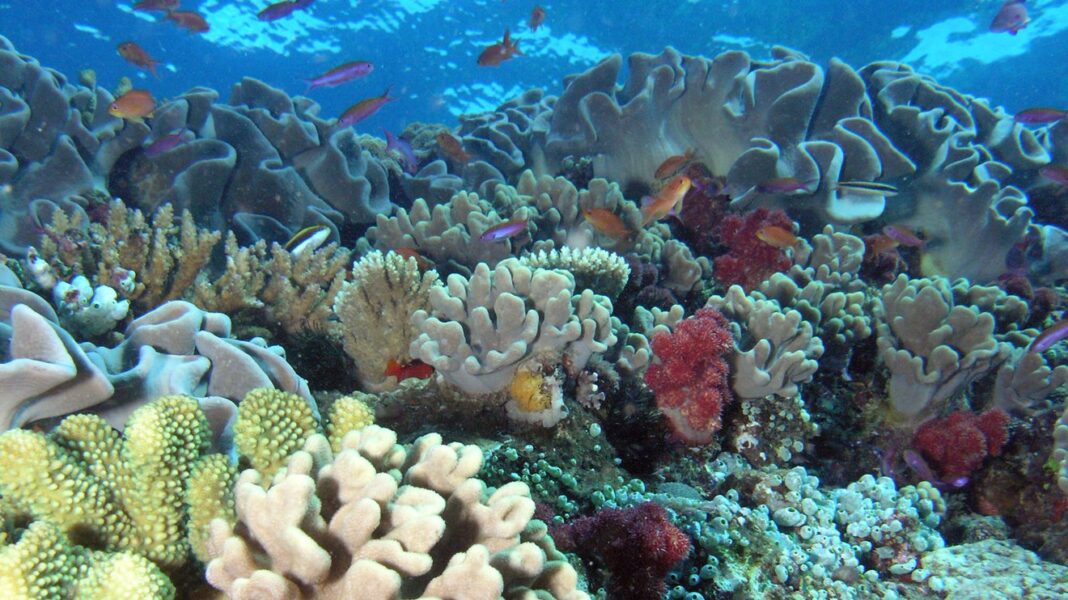A long-term study of Hawaiian coral species provides a surprisingly optimistic view of how they might survive warmer and more acidic oceans resulting from climate change.
Researchers found that the three coral species studied did experience significant mortality under conditions simulated to approximate ocean temperatures and acidity expected in the future – up to about half of some of the species died.
But the fact that none of them completely died off – and some actually were thriving by the end of the study – provides hope for the future of corals, said Rowan McLachlan, who led the study as a doctoral student in earth sciences at Ohio State University.
“We found surprisingly positive outcomes in our study. We don’t get a lot of that in the coral research field when it comes to the effects of warming oceans,” said McLachlan, who is now a postdoctoral researcher at Oregon State University.
While the findings are optimistic, they are also more realistic than previous studies, said study senior author Andréa Grottoli, distinguished professor of earth sciences at Ohio State.
The study lasted 22 months, which is much longer than most similar research, which often spans days to up to five months, Grottoli said.
“There are aspects of coral biology that take a long time to adjust. There can be a dip when they are faced with stressors, but after enough time corals can recalibrate and return to a normal state,” Grottoli said. “A study that lasts five months is only seeing part of the arc of the response.”
The research was published today (March 10) in the journal Scientific Reports.
Rising levels of carbon dioxide in the atmosphere contribute to warming oceans, and about a quarter of the carbon dioxide in the air dissolves into the ocean, causing it to become more acidic. Both rising acidity and temperatures threaten coral, Grottoli said.
In this study, the researchers collected samples of the three most common coral species in Hawaii: Montipora capitata, Porites compressa and Porites lobata.
The samples were placed in tanks with four different conditions: a control tank with current ocean conditions; an ocean acidification condition (-0.2 pH units); an ocean warming condition (+2 degrees Celsius); and a condition that combined warming and acidification.
Results showed that warming oceans will hurt coral species: 61% of corals exposed to the warming conditions survived, compared to 92% exposed to current ocean temperatures.
The two Porites species were more resilient than M. capitata in the combined warming and acidification condition. Over the course of the study, survival rates were 71% for P. compressa, 56% for P. lobata and 46% for M. capitata.
“Of the coral that survived, especially the Porites species, they were coping well, even thriving,” McLachlan said. “They were able to adapt to the above-average temperature and acidity.” For example, the surviving Porites were able to maintain normal growth and metabolism.
Grottoli said M. capitata may fare better in the real world than they did in this study. The species relies heavily on zooplankton as a food source when under stress, and they may not have had as much available in the study conditions as they would in the ocean.
“We may have underestimated their capacity for resilience in this study. It may be higher on the reefs,” Grottoli said.
In most ways, though, this study did better than most at creating real-life conditions, the researchers said.
The corals were put in outside tanks designed to mimic ocean reefs by including sand, rocks, starfish, urchins, crabs, and fish. These tanks also allowed natural variability in temperature and pH levels over the course of each day and over the seasons, as corals would have in the ocean.
“When you’re trying to make predictions of the long-term effects of climate change, it is important to mimic the real-world conditions, and our study does that,” Grottoli said.
The findings regarding the two Porites species may offer particular hope for corals around the world. The Porites are part of a genus of coral that is common across the world and that has a key role in reef building, so their resilience in this study is a good sign, Grottoli said.
https://phys.org/news/2022-03-hawaiian-corals-resilience-oceans.html


